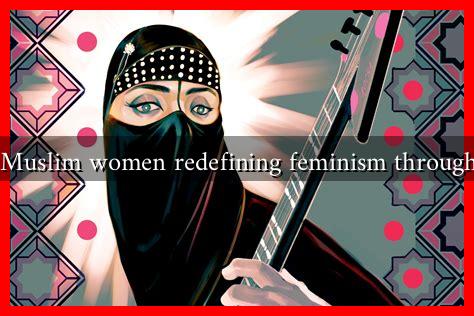-
Table of Contents
How are Muslim Women Redefining Feminism Through the Veil?
The veil, often a symbol of oppression in Western discourse, has become a powerful emblem of empowerment for many Muslim women. As they navigate the complexities of identity, culture, and faith, these women are redefining feminism in ways that challenge traditional narratives. This article explores how Muslim women are reclaiming the veil and using it as a tool for self-expression and social change.
The Veil: A Symbol of Oppression or Empowerment?
The perception of the veil varies significantly across different cultures and contexts. In many Western societies, the hijab and other forms of veiling are often viewed as symbols of patriarchal oppression. However, for many Muslim women, the veil represents autonomy and a personal choice that aligns with their beliefs. This dichotomy raises important questions about the nature of feminism and the role of choice within it.
- Personal Agency: Many Muslim women assert that wearing the veil is a conscious decision that reflects their identity and beliefs. They argue that true feminism should support women’s choices, regardless of whether those choices align with Western ideals.
- Reclaiming Narratives: By choosing to wear the veil, Muslim women are actively participating in the feminist discourse, challenging stereotypes, and reclaiming their narratives from a predominantly Western perspective.
Case Studies: Voices of Empowerment
Several prominent Muslim women have emerged as voices of empowerment, using their platforms to redefine feminism through the veil. Their stories illustrate the diverse experiences of Muslim women and the multifaceted nature of feminism.
- Ilhan Omar: As one of the first Muslim women elected to the U.S. Congress, Omar has used her position to advocate for policies that support marginalized communities. Her hijab has become a symbol of representation and resilience.
- Yasmin Abdel-Magied: An Australian-Sudanese engineer and activist, Abdel-Magied has spoken out about the importance of intersectionality in feminism. She emphasizes that the veil can be a source of strength and identity rather than a symbol of oppression.
- Linda Sarsour: A prominent activist in the Women’s March, Sarsour has highlighted the importance of inclusivity in feminism. She argues that the veil is a personal choice that should be respected and celebrated.
Statistics and Trends: The Growing Acceptance of the Veil
Recent studies indicate a shift in perceptions regarding the veil among younger generations. According to a 2020 Pew Research Center survey, a significant percentage of Muslim women in Western countries report feeling empowered by their choice to wear the hijab. Key findings include:
- Approximately 62% of Muslim women in the U.S. believe that wearing the hijab is a personal choice that should be respected.
- In France, a country known for its controversial stance on religious symbols, 45% of young Muslims view the hijab as a form of self-expression.
This data suggests that the narrative surrounding the veil is evolving, with more individuals recognizing it as a legitimate expression of identity rather than a mere symbol of oppression.
Intersectionality: Bridging Cultures and Feminisms
Muslim women are also at the forefront of discussions about intersectionality in feminism. They highlight the importance of considering race, class, and cultural background when discussing women’s rights. This approach fosters a more inclusive feminist movement that recognizes the diverse experiences of women worldwide.
- Global Solidarity: Muslim women are forming alliances with other marginalized groups, advocating for a feminism that transcends cultural boundaries.
- Challenging Stereotypes: By sharing their stories, Muslim women are challenging the monolithic portrayal of their identities and promoting a more nuanced understanding of feminism.
Conclusion: A New Feminist Narrative
Muslim women are redefining feminism through the veil by reclaiming their narratives and asserting their agency. As they challenge stereotypes and advocate for inclusivity, they are reshaping the feminist discourse to be more representative of diverse experiences. The veil, once seen as a symbol of oppression, is increasingly recognized as a powerful tool for empowerment and self-expression. In this evolving landscape, it is essential to listen to and support the voices of Muslim women as they carve out their space within the broader feminist movement.
For further reading on this topic, you can explore resources from organizations like Muslim Women’s Network and Pew Research Center.

